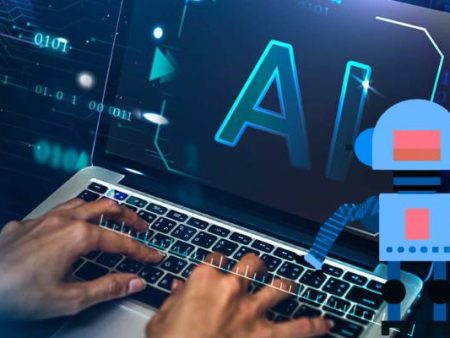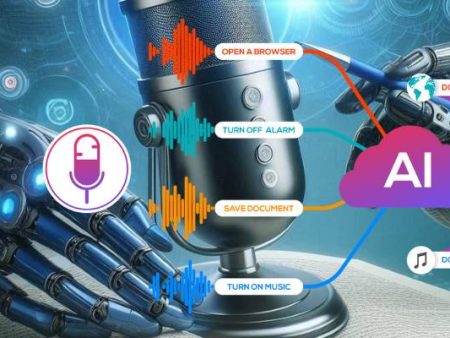Everywhere you turn in marketing circles these days, there’s the same whispered question: Can AI outrank humans?
It isn’t just an SEO debate—it’s a tug-of-war between efficiency and creativity, speed and depth, quantity and authenticity.
I’ve sat in meetings where copywriters swear their jobs are doomed, while others roll their eyes and insist, “People will always prefer real voices.”
The truth? It’s complicated. AI isn’t going away, and in 2025 it’s not just a shiny toy—it’s reshaping the way content is written, optimized, and delivered.
So let’s talk about it honestly. Not with panic, not with blind optimism. Just with a clear-eyed look at how AI copywriting vs human writing plays out in SEO today—and how it might play out tomorrow.
How We Got Here: SEO Before the Bots Took Over
Remember when SEO was simpler? It was all about keywords stuffed into titles, backlinks from anyone who would give them, and just enough content to trick Google into ranking a page.
Over time, Google got smarter. By 2020, the big focus was “helpful content.” Writers had to craft articles that actually answered questions, gave real value, and kept readers on the page.
Enter long-form SEO content: deep-dive guides, in-depth blogs, and comprehensive resources that signaled authority.
Humans did the heavy lifting here. Sure, we had keyword tools, but the nuance—the storytelling, the empathy, the unexpected angles—that was human work.
Then came AI large language models, and suddenly the bottleneck wasn’t writing anymore. It was editing.
The Rise of AI Copywriting
Fast-forward to now. Tools like Jasper, Writesonic, Copy.ai, and yes, ChatGPT, are producing millions of words daily.
According to Statista, more than 58% of digital marketers worldwide were already using AI-powered tools for content creation by late 2024.
Gartner projects that by 2026, 80% of marketing copy will be at least partially machine-generated.
That’s not a forecast for the distant future—that’s happening as you read this.
AI is fast. It’s tireless. It can generate 20 blog outlines in seconds, whip up 50 meta descriptions before your coffee cools, and churn out endless product descriptions without sighing once.
So does that mean humans are out of the picture? Not quite.
AI Copywriting vs Human Writing
This is where we bump into the heart of the matter: AI copywriting vs human creativity.
- AI strengths:
- Blazing speed.
- Data-driven keyword usage.
- Consistent tone across large volumes.
- Scalability at almost no cost.
- Human strengths:
- Emotional nuance.
- Storytelling rooted in lived experience.
- Humor, irony, and cultural context.
- The ability to surprise with fresh metaphors or unusual framing.
Here’s the uncomfortable truth: many businesses don’t necessarily need nuance. They need rankings. And if AI delivers, they’re happy.
But if you’re trying to build a brand with trust and loyalty? That’s where humans still pull ahead.
The Google Factor
Whenever I bring this up with clients, someone inevitably asks: But won’t Google penalize AI content?
The answer, according to Google itself, is no—as long as the content is high-quality. Their Helpful Content Update in 2023 made it clear: what matters is usefulness, not authorship.
That means if an AI-written blog post is accurate, thorough, and satisfies user intent, Google has no reason to bury it.
But here’s the catch—AI often “hallucinates” facts. It writes convincingly but sometimes incorrectly. And if Google catches inaccuracies or content that doesn’t meet user needs? Down it goes.
So yes, AI can rank—but not without human oversight.
Long-Form SEO Content: Still the King
Despite the changes, long-form SEO content: hasn’t lost its crown.
A Backlinko study found that the average top-ranking page in Google search results is about 1,447 words.
Why? Because long-form gives space to answer questions thoroughly, weave in keywords naturally, and demonstrate authority.
AI makes creating this content easier. You can prompt it to draft a 3,000-word guide, and it will happily oblige. But left unchecked, that content often feels generic. It says a lot but means little.
The magic happens when humans take that draft and infuse it with real insight, personality, and narrative flow. That’s the hybrid model I’ll get into later.
Emotional Depth: The Human Advantage
I’ll confess something here. As a writer, I used to scoff at AI-generated copy. Then I started editing some of it. And I had to admit—it wasn’t half bad. Clean, structured, easy to scan.
But here’s what always stood out: the lack of emotional depth.
Humans don’t just write to inform—we write to connect. We inject vulnerability, humor, empathy.
A parent writing about school lunches doesn’t just list nutritional facts—they talk about the morning chaos, the guilt of forgetting juice boxes, the joy of finding a routine that works.
AI can mimic tone, but it doesn’t live those experiences. And that gap, however subtle, is where humans still matter most.
AI Tools for SEO Workflows
Let’s talk specifics. What are marketers actually using AI for? Here’s how AI tools for copywriting are being slotted into real workflows:
- Keyword research: AI can suggest endless variations, semantically related terms, and long-tail queries.
- Outlines: Generating article structures optimized for readability and SEO.
- First drafts: AI creates baseline content humans can refine.
- Meta & snippets: Perfect for repetitive, high-volume microcopy.
- Content scaling: Brands with 10,000+ product SKUs can’t realistically rely on human writers alone.
In other words, AI is handling the grunt work. Humans are (ideally) stepping in for quality, accuracy, and voice.
Where AI Falls Short
We can’t ignore the cracks in the system:
- Accuracy issues: AI still fabricates facts or sources.
- Originality limits: It often rehashes existing ideas rather than pushing new ones.
- Brand voice: It struggles to consistently capture subtle brand identities.
- Over-optimization: AI sometimes overuses keywords in ways that feel robotic.
These weaknesses make one thing clear: businesses relying solely on AI risk flooding the web with shallow, repetitive content. And eventually, audiences (and search engines) will notice.
The Hybrid Future
Here’s where I see things landing in 2025: not AI replacing humans, but AI collaborating with them.
A realistic workflow looks like this:
- AI drafts a blog based on target keywords.
- A human editor refines it, fact-checks, and adds personal stories or insights.
- SEO specialists optimize structure, internal linking, and schema.
- AI assists again with repurposing content into social snippets or email copy.
This approach marries efficiency with depth. It’s not about choosing sides—it’s about recognizing that machines are good at speed, but humans are good at soul.
What the Data Tells Us
Some numbers to ground all this:
- According to HubSpot, 82% of marketers who use AI say it helps them generate content faster, but only 45% say it consistently produces content that “sounds on-brand.”
- A 2024 Search Engine Journal survey found that 68% of SEO professionals now use AI for drafting, but 74% still rely on humans for final editing.
- BrightEdge predicts that by 2026, AI will influence over 90% of online content creation workflows.
So the data backs up what many of us are already feeling: AI is unavoidable, but not self-sufficient.
Ethical Considerations
We can’t wrap this without asking the ethical questions.
- Should readers know if a piece was AI-generated?
- What happens to entry-level copywriters—do we risk cutting off pathways for young talent?
- Could AI flood the web with so much mediocre content that even good writing struggles to shine?
These questions matter because SEO isn’t just about rankings—it’s about trust. And once trust erodes, no tool can patch it back together.
Final Thoughts: Can AI Really Outrank Humans?
So back to the original question. Can AI outrank humans?
If the measure is technical—keywords, ranking signals, content length—then yes, AI can and does already outrank human writers. The algorithms don’t care if the words came from fingers or from silicon.
But if the measure is deeper—trust, loyalty, brand resonance, emotional connection—then my answer is no.
Machines can imitate, but they don’t create relationships. They don’t feel the heartbeat behind the words.
The future of SEO isn’t about humans versus AI. It’s about whether we learn to combine the efficiency of machines with the authenticity of human experience.
If we do, we won’t just rank—we’ll resonate. And in the long run, resonance is what truly wins.
Quick Comparison: AI Copywriting vs Human Copywriting
| Factor | AI Copywriting | Human Copywriting |
| Speed | Extremely fast | Slow and deliberate |
| Scale | Near-infinite | Limited by hours |
| Accuracy | Sometimes flawed | Stronger with fact-checking |
| Emotional nuance | Simulated | Genuine |
| Cost | Low per word | Higher investment |
| Brand voice | Often generic | Authentic and consistent |
Conclusion
2025 won’t be the year humans lose to AI—it will be the year we learn to work together.
The smartest businesses will use AI for what it’s good at: speed, scale, structure. And they’ll rely on humans for what only humans can do: connect, inspire, persuade.
Because in the end, SEO isn’t just about ranking on Google. It’s about being remembered by people.


